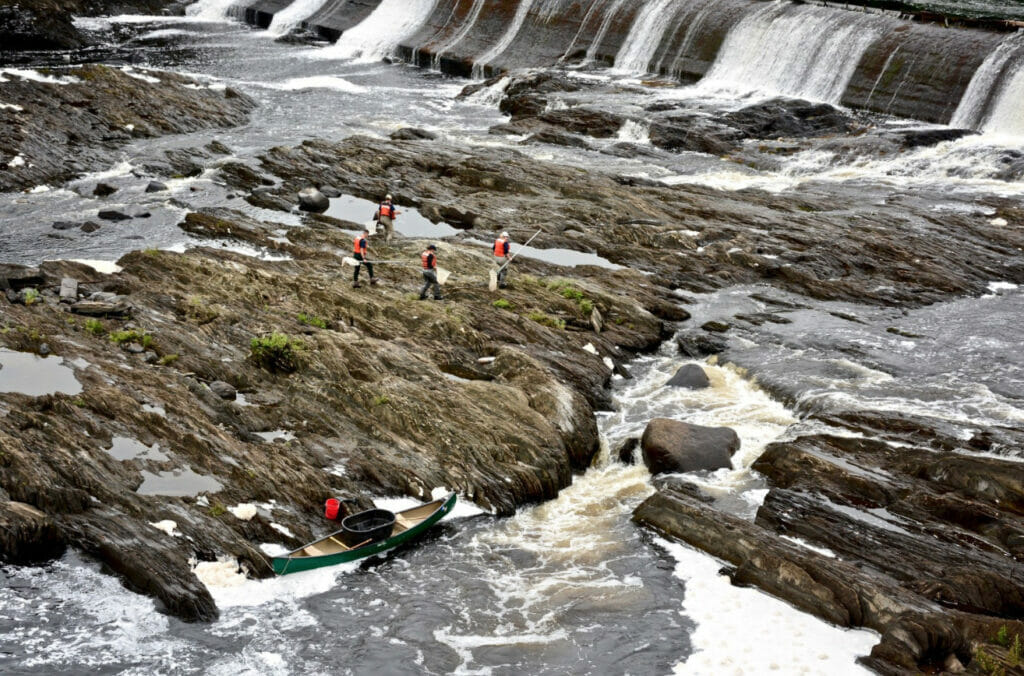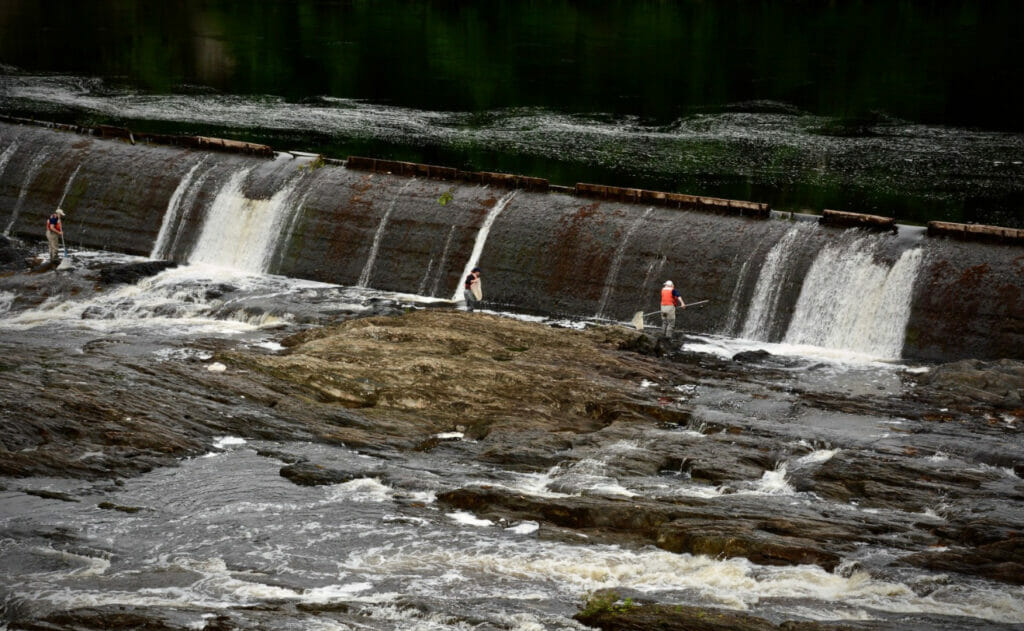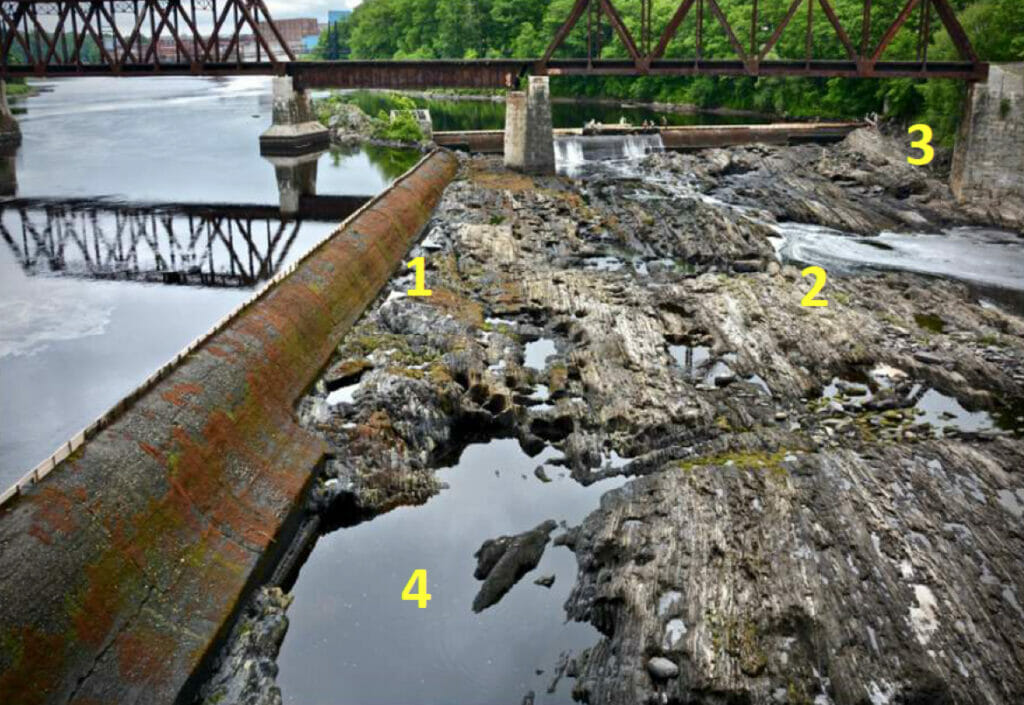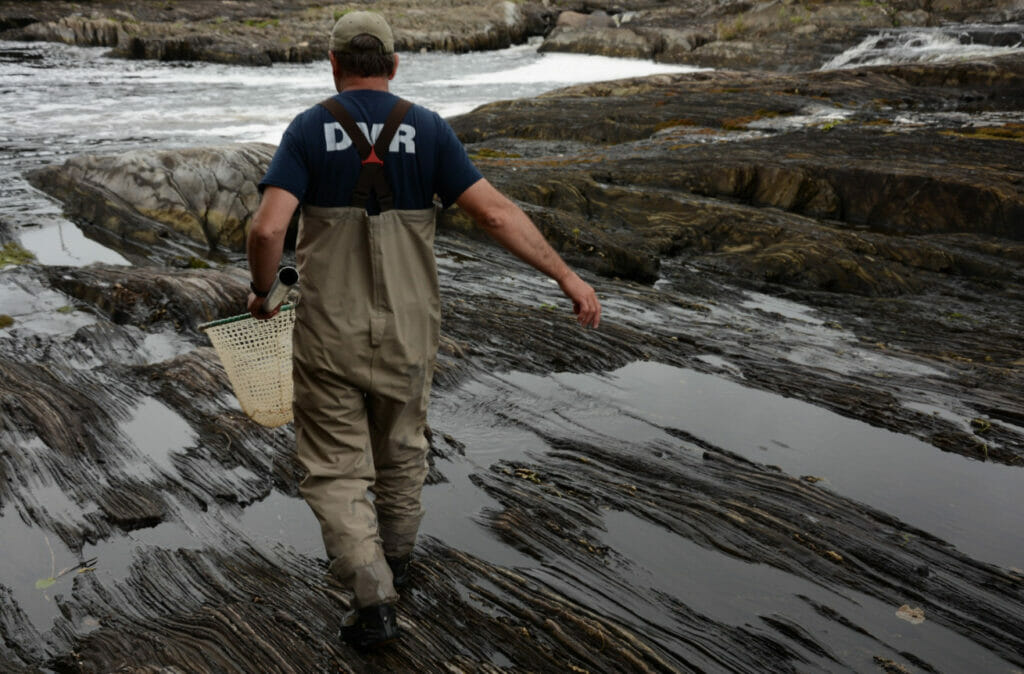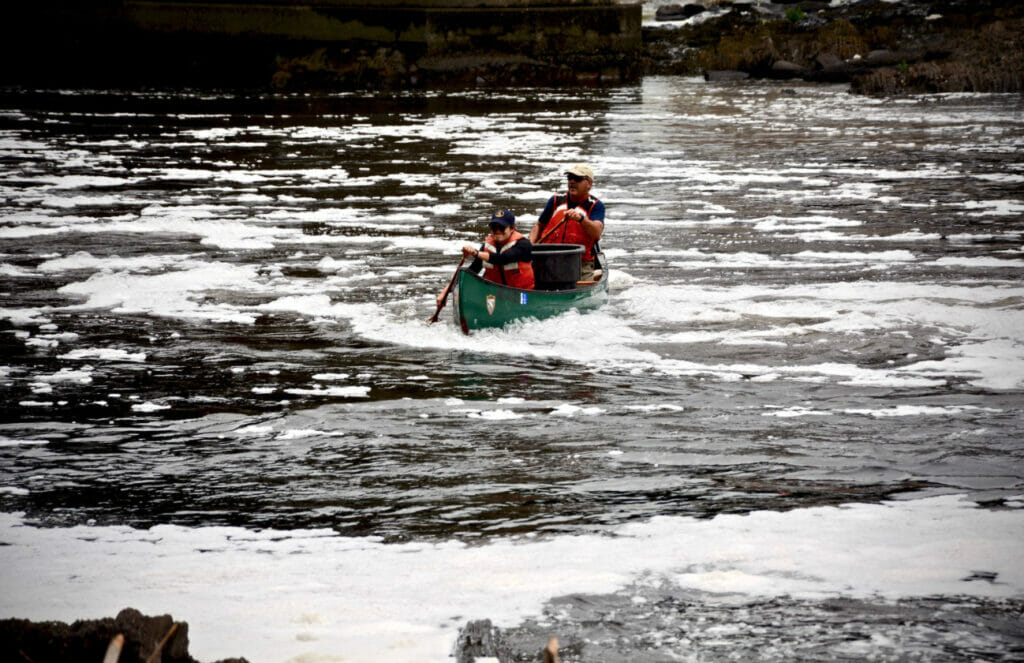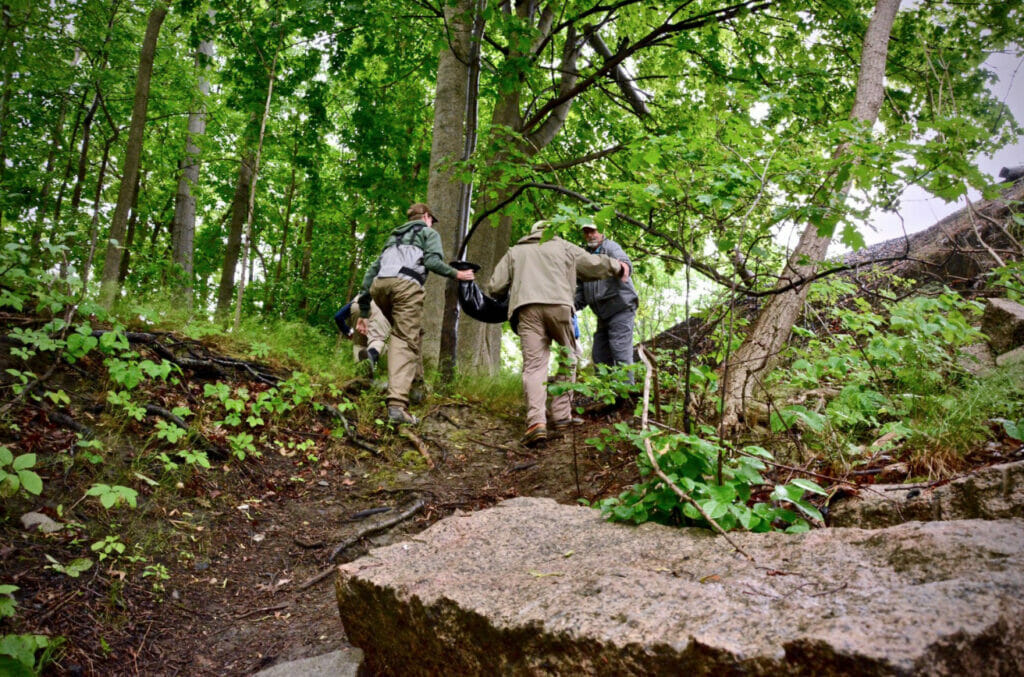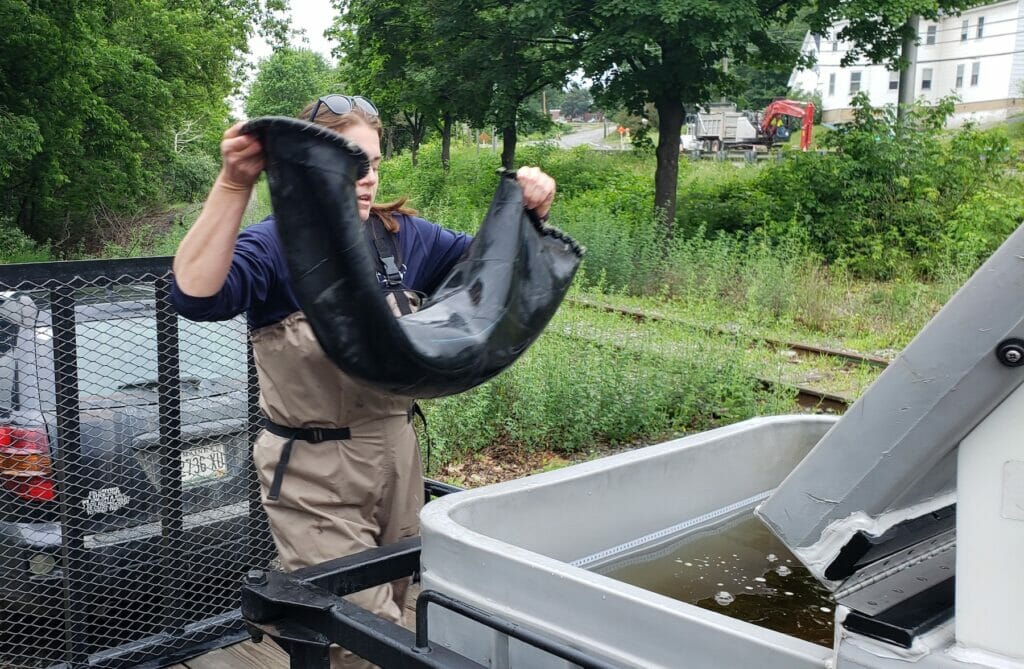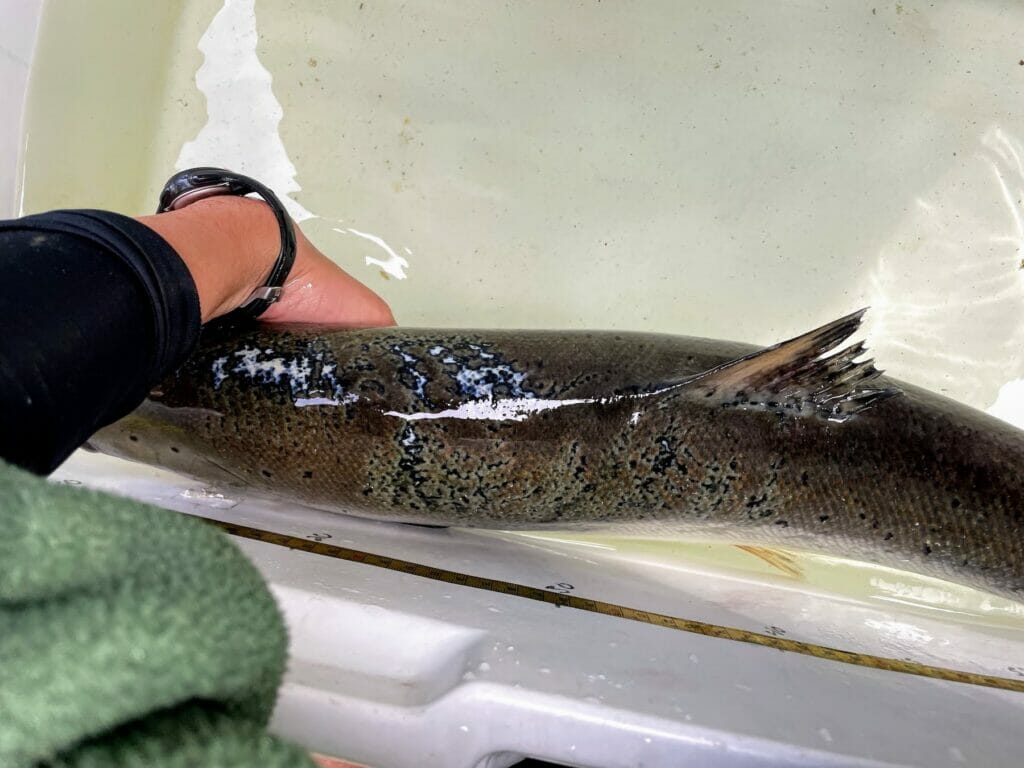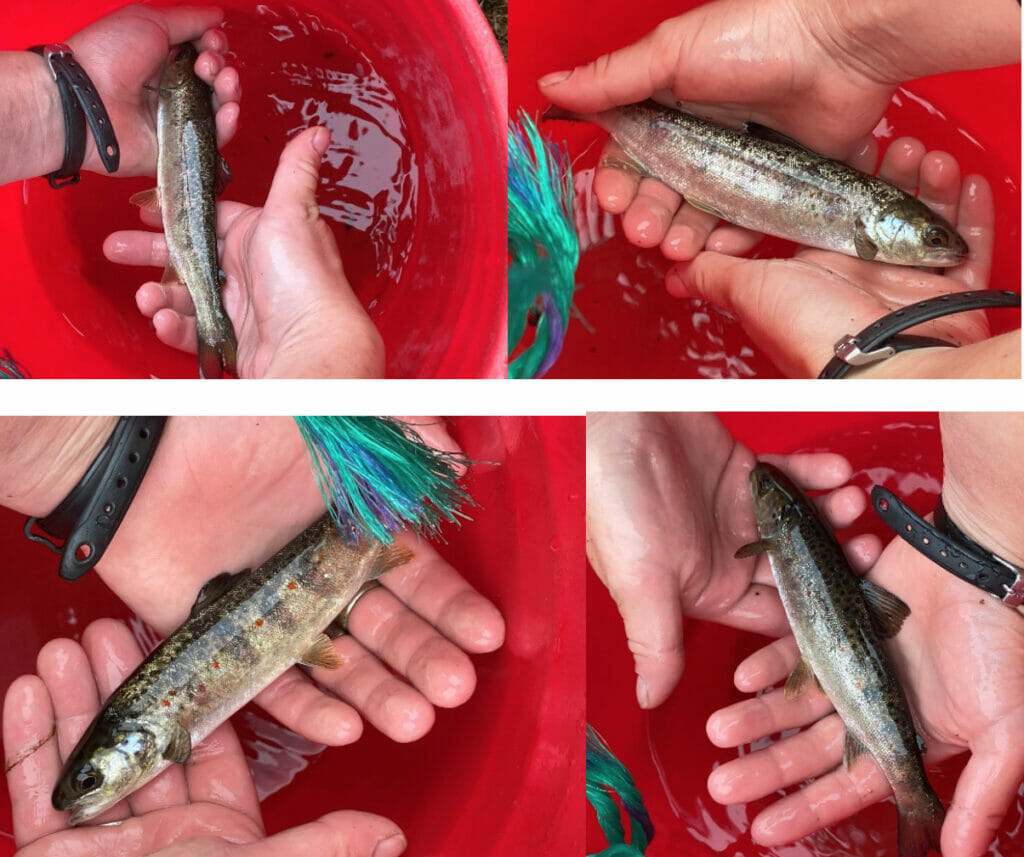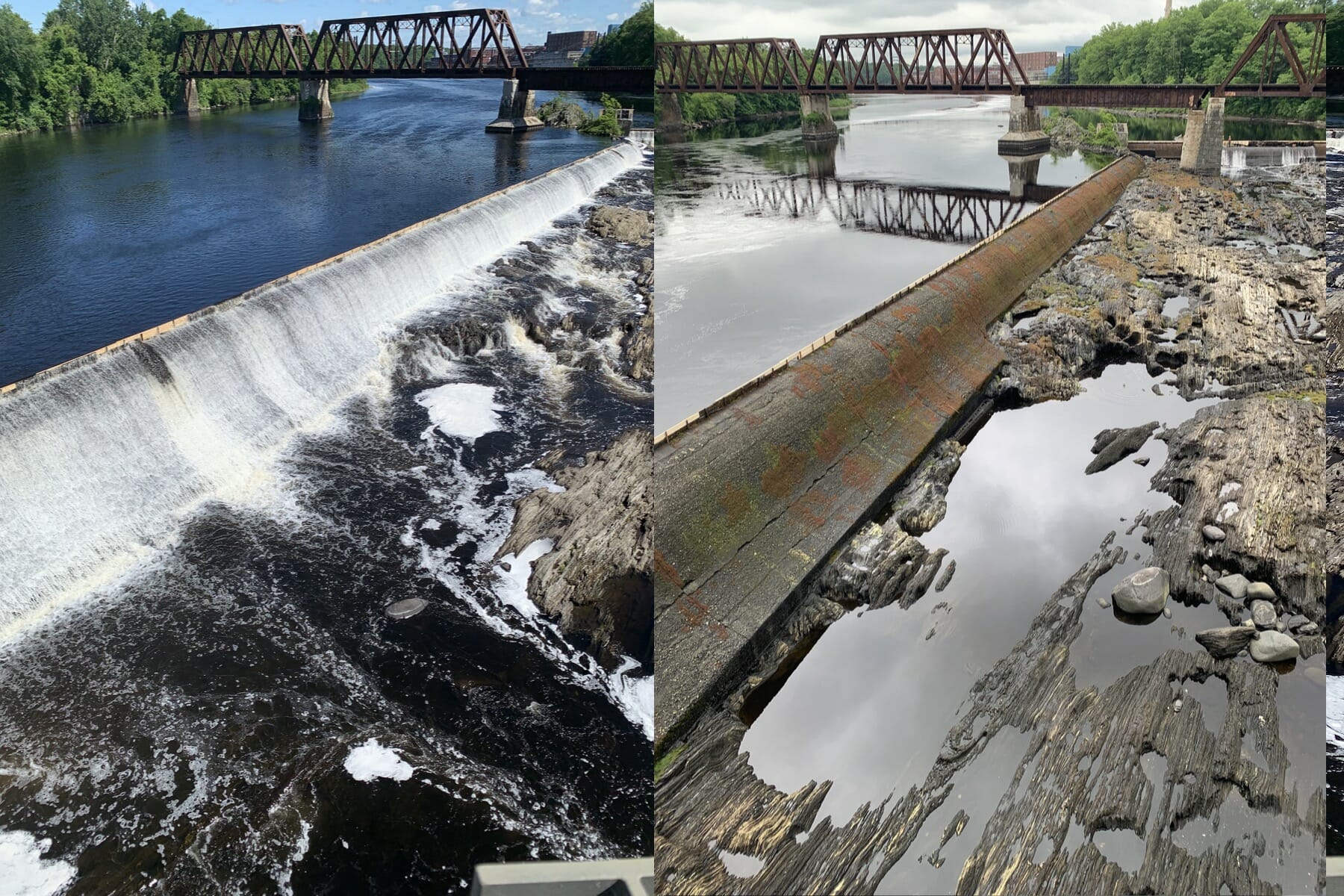By Mark Taylor and Jeff Reardon
Stranded in an isolated pool below a dewatered dam, the large Atlantic salmon scooted back and forth, knocking its snout into rocks as it frantically looked for escape.
Salvation came in the form of a long-handled net. An employee with the Maine Department of Marine Resources scooped up the salmon, hustling the fish to a temporary refuge in a large, water-filled tub, one more step in a rescue effort that would end with the salmon’s release in a nearby river.
On a recent cool Maine morning, Trout Unlimited volunteers were part of the well-coordinated effort to rescue endangered Atlantic salmon stranded during the drawdown of a head pond at Lockwood Dam, on the Kennebec River in Waterville, Maine.
Thirteen members of Trout Unlimited’s Georges River, Kennebec Valley, and Downeast Chapters were part of the June 15, 2021, effort, which also included volunteers from the Atlantic Salmon Federation.
Six staffers from the Maine Department of Marine Resources were on hand, as were two employees from the Maine Department of Inland Fisheries and Wildlife and four staffers from the Brookfield Renewable Power, which owns and operates the dam.
The rescuers also captured and moved 23 juvenile Atlantic salmon.
Lockwood is the first dam above the head of tide on the Kennebec. It and three other Brookfield-owned dams above it stand between the ocean and the Sandy River which holds most of the Kennebec watershed’s high-quality habitat for salmon.
The Kennebec River made headlines around the world when the head-of-tide Edwards Dam was removed in 1999.
Since then, populations sea-run alewives, blueback herring and American shad have recovered, with an annual run of millions of spawning alewives and blueback herring. The restored American shad fishery may be the best on east coast.
But that success is limited to portion of the watershed downstream from the Lockwood Dam, a stretch of river that contains little high-quality habitat for Atlantic salmon.
Lockwood and the three dams above it are currently the focus of a high stakes battle over fish passage.
TU and several other groups are arguing to the Federal Energy Regulatory Commission and NOAA Fisheries that recovery of endangered salmon requires removal of some or all of these dams. Brookfield is pushing to build three new fishways.
TU and its partners and the Maine Department of Marine Resources insist that inefficiencies that are unavoidable with passage over dams — including fish strandings and associated handling stress — make restoration over four dams impossible.
The annual drawdown at the Lockwood Dam is initiated to replace flashboards in the dam’s bypass channel. Dropping the impoundment and replacing the flashboards temporarily dewaters ledges in the bypass channel, stranding adult and juvenile salmon and other sea-run and resident fish that are attracted to the spillway when water spills over it.
The drawdown began at 9 a.m., and the first salmon was found about 20 minutes later. That adult salmon was netted, brought to shore, and carried up a steep slope to a truck for transport to the Sandy River.
At least two other adult Atlantic salmon were trapped in an isolated pool from which they could not be captured. Volunteers were on site for about five hours. In addition to the adult salmon, 23 juvenile salmon smolts were captured on the ledges and moved downstream, along with multiple resident freshwater fish of several species.
